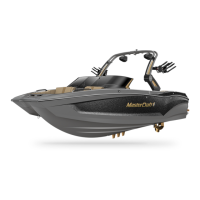2016 OWNERS MANUAL / 045
GENERAL PRUDENTIAL RULE
This rule is called Rule 2 in the International Rules and says,
“In obeying and construing these rules due regard shall be had
to all dangers of navigation and collision, and to any special
circumstances, which may render a departure from the above
rules necessary in order to avoid immediate danger.”
RULES WHEN ENCOUNTERING
VESSELS
There are three (3) main situations in which you may encounter oth-
er vessels, and you must avoid a collision. These are:
• Meeting (you are approaching another vessel head-on).
• Crossing (you are traveling across the other vessel’s path).
• Overtaking (you are passing or being passed by another vessel).
STEERING AND SAILING RULES/
SOUND SIGNALS
Any time two (2) vessels on the water meet one another, one vessel
has the right-of-way. It is called the stand-on vessel. The vessel that
does not have the right-of-way is called the give-way or burdened
vessel.
These rules determine which vessel has the right of way, and
accordingly, what each vessel should do.
The vessel with the right-of-way has the duty to continue its course
and speed, except to avoid an immediate collision. When you
maintain your direction and speed, the other vessel will be able to
determine how best to avoid you.
The vessel that does not have the right of way has the duty to take
positive and timely action to stay out of the way of the stand-on
vessel. Normally, the give-way vessel should not cross in front of the
stand-on vessel, but should slow down or change direction briefly
and pass behind the other vessel. You should always move in such
a way that the stand-on operator can see what you are doing if you
are operating the give-way vessel.

